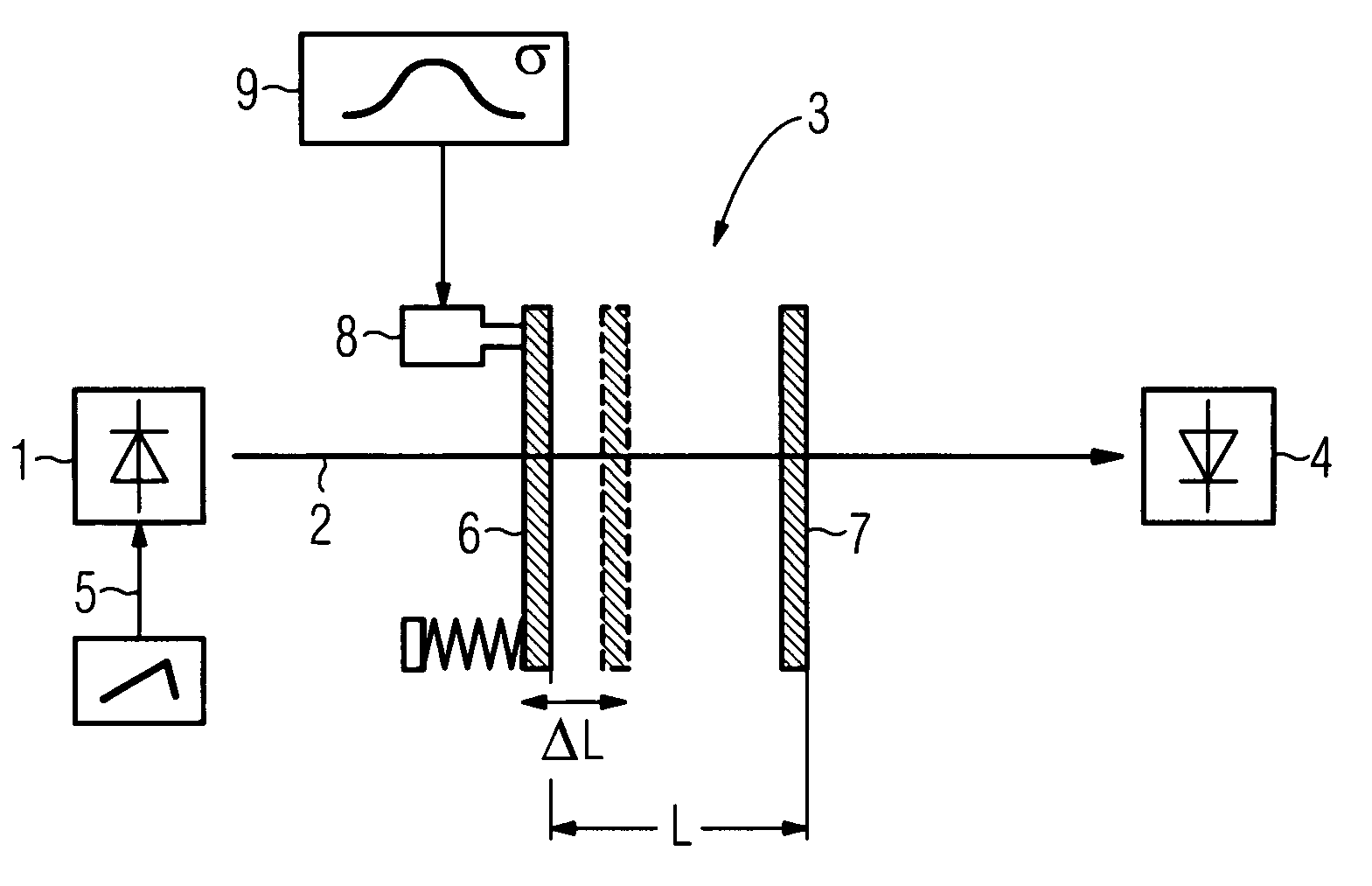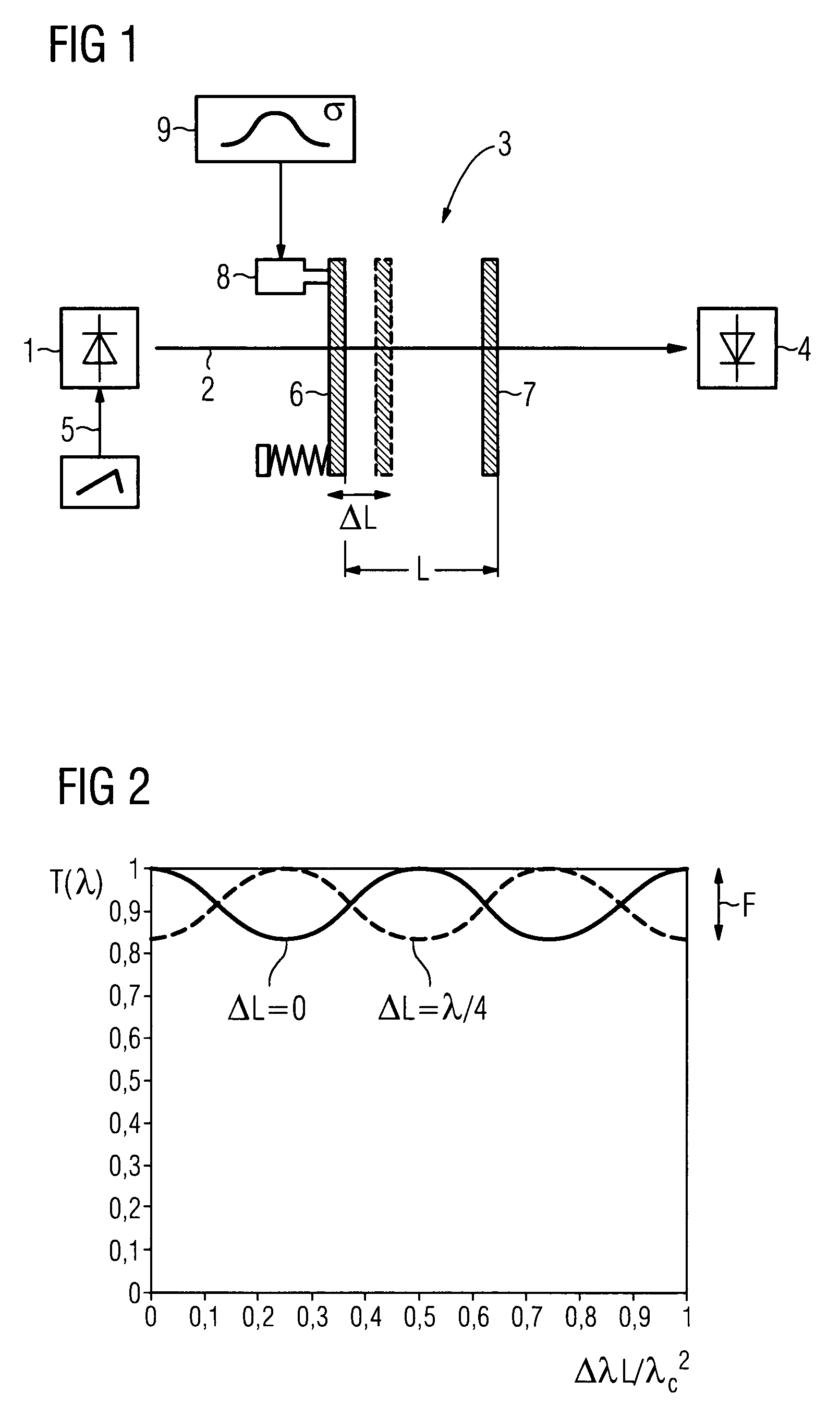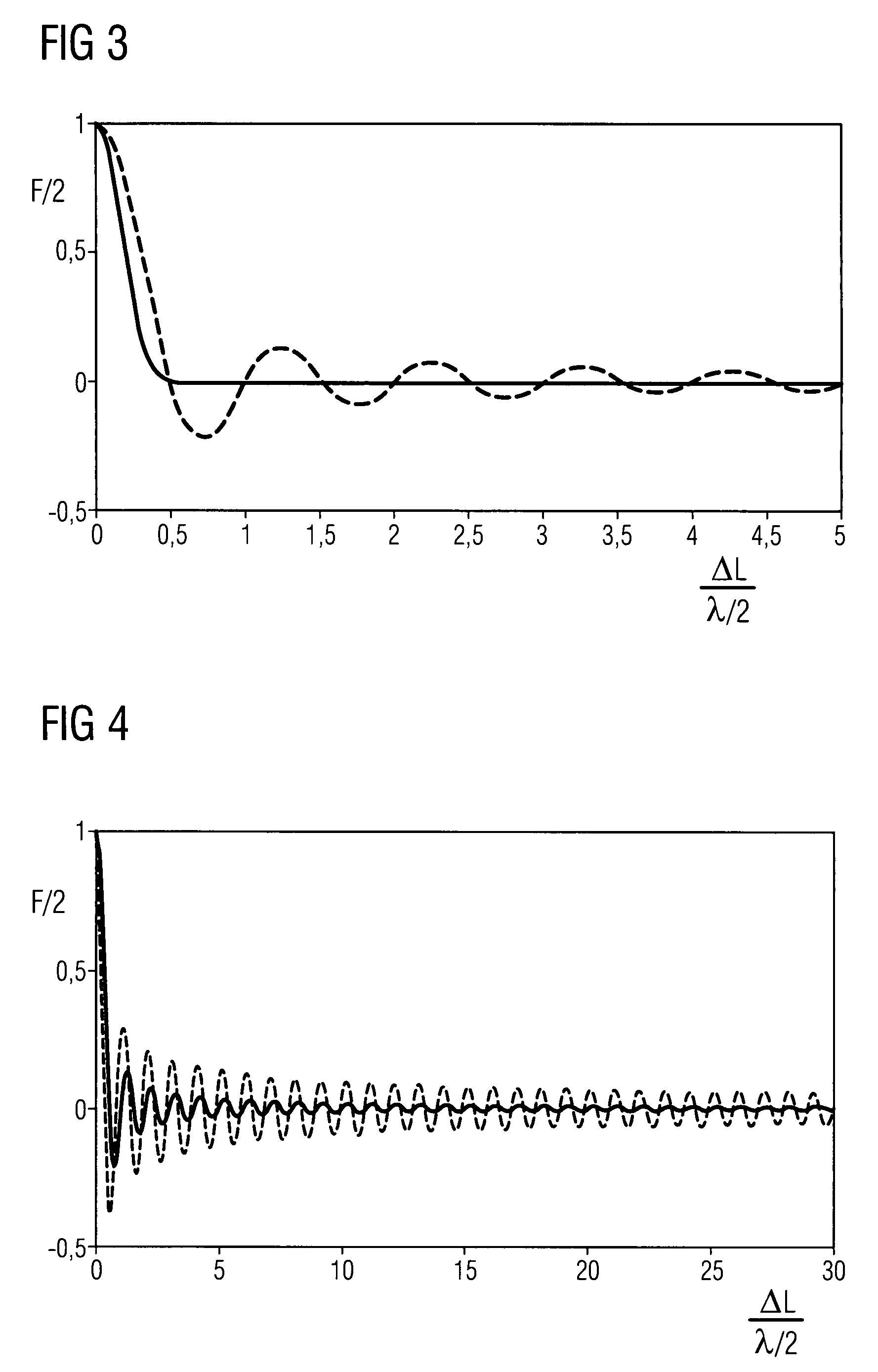Method and apparatus for reducing fringe interference of light
a fringe interference and light technology, applied in the field of light fringe interference reduction methods and apparatuses, can solve the problems of affecting the sensitivity of the sample, affecting the absorption induced signal of the sample, and the reflections causing the fringe interference are extremely difficult to eliminate completely, so as to reduce the fringe interference
- Summary
- Abstract
- Description
- Claims
- Application Information
AI Technical Summary
Benefits of technology
Problems solved by technology
Method used
Image
Examples
Embodiment Construction
[0017]FIG. 1 shows, as an example for the apparatus according to the invention, a laser spectrometer including a frequency tunable laser 1 for generating a laser beam 2 which passes through an optical system 3 onto an optical detector 4. The optical system 3 comprises, inter alia, a sample cell (not shown) containing a trace gas species in a gas mixture. The laser 1 is modulated with a triangular signal 5 in order to sweep the laser wavelength across specific absorption lines of the trace gas to be determined. The signal received at the optical detector 4 is demodulated to obtain an absorption induced signal.
[0018]Partially reflecting optical surfaces of the sample cell and of other optical elements of the optical system 3, such as windows or lenses, form a passive optical cavity (etalon) which is here represented by a pair of plane parallel partially reflecting planes 6 and 7 at a distance L. This etalon may create the so-called etalon effect which is a dominating source of disturb...
PUM
 Login to View More
Login to View More Abstract
Description
Claims
Application Information
 Login to View More
Login to View More - R&D
- Intellectual Property
- Life Sciences
- Materials
- Tech Scout
- Unparalleled Data Quality
- Higher Quality Content
- 60% Fewer Hallucinations
Browse by: Latest US Patents, China's latest patents, Technical Efficacy Thesaurus, Application Domain, Technology Topic, Popular Technical Reports.
© 2025 PatSnap. All rights reserved.Legal|Privacy policy|Modern Slavery Act Transparency Statement|Sitemap|About US| Contact US: help@patsnap.com



